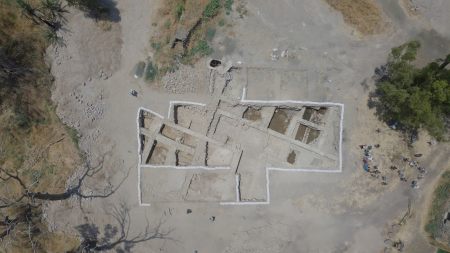Ancient village cursed by Jesus flooded in heavy rains

One of the sites on the banks of the Sea of Galilee near where some believe Jesus miraculously fed the 5,000 as described in all four Gospels has been flooded by heavy rains that have forced archeologists to abandon their excavation.
Kinneret College professor Moti Aviam, a lead archaeologist at the excavation site that researchers are trying to prove is where the ancient fishing village of Bethsaida once stood, told the Israeli newspaper Haaretz about the extent of the flooding at the site.
He recently returned to the site following record-breaking rainfall in northern Israel in recent months after coronavirus restrictions were lifted.
“Obviously I knew the Kinneret [Sea of Galilee] had risen, but I didn’t know how its rise would affect the excavation,” Aviam said. “I don’t remember a thing like this in the last 30 years, though I don’t schlep over every year to check it.”
“Even if it rains in April and May [and it did], by July or August the site dries out,” he added. “But it never occurred to me that the lagoon would encompass the whole site of el-Araj.”
The excavation site is located in the historic coastal village of El-Araj.
Collaborating with Kinneret College on the excavation is the Distinguished Professor of New Testament and Christian Origins R. Steven Notley of Nyack College in New York, as well as student volunteers.
The New Testament verse John 1:44 states that Bethsaida is the hometown of Jesus’ disciples Andrew, Peter and Philip. Bethsaida is also one of the towns on the Sea of Galilee that Jesus cursed for failing to repent as described in Luke 10:13-15 and Matthew 11:20-24.
The town is also said to be near where Jesus also miraculously fed the 5,000 from five loaves of barley bread and two fish, and near where Jesus restored a blind man’s sight as described by Mark 8:22-25.
According to Aviam, much of the village was on land before the rains came.
Now, some parts of the excavation site are submerged. He told the newspaper that the remains of a Byzantine structure that is believed to be the Church of the Apostles is underwater.
The Church of the Apostles was said to have been built over the house of Jesus’ disciples Peter and Andrew, who were brothers.
“At the moment, the water is 80 centimeters [2 feet, 7 inches] above the mosaic of the Byzantine church, which was built 500 years after Jesus’ time,” Aviam said.
The excavation of the church structure was set to resume this summer. However, the excavation will have to be delayed until the summer excavation season of 2021.
“The lake water rises and falls over the ages, and no damage has been caused,” Aviam was quoted as saying. “We conserved the mosaic floor of the church and the water standing on it won’t harm it. But even if the water level recedes by July, we won’t be able to continue excavation work because of the mud.”
A competing excavation site that researchers also believe could be the village of Bethsaida is called et-Tell. The ancient village is located north of el-Araj on the shore of the Sea of Galilee.
An excavation site in et-Tell is led by Rami Arav, associate professor of religious studies at the University of Nebraska Omaha. He is author of the book, Bethsaida, a City by the Northern Shores of the Sea of Galilee.
Follow Samuel Smith on Twitter: @IamSamSmith
or Facebook: SamuelSmithCP





















